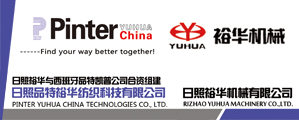Report on the Current Situation of Cotton Textile Market in China
May 18, 2017 | by Shen Da
Recently, China Cotton Textile Association has sent a total of 25 people, composed of 12 research groups, respectively, to visit 74 cotton textile enterprises and nine cotton textile industry clusters in eight provinces and regions, including Jiangsu, Zhejiang, Shandong, Henan, Fujian, Jiangxi, Hubei, and Xinjiang, from six topics of general situation of industry clusters and enterprises, raw material security, market situation, comprehensive cost and efficiency, transformation and upgrading, as well as brand building.
Orders to increase with a good start after the Spring Festival
The investigated enterprises involved in 18.67 million pieces of spinning spindles and 22 thousand units of looms. According to business reflection, the first quarter of 2017 started better, and the survey showed that the rate of operation was nearly 100% of 93% enterprises on the eighth day after the Spring Festival.
After the holiday, the production situation is stable, and most companies were more optimistic about it. Many enterprises have adapted to the market demands for single and small order, and shortness of delivery cycle, so the inventory presented a low level and risk of bad debts has decreased. The orders has increased by 5% - 10% form a year earlier, which can realize continuous production for 2 or 3 months; meanwhile, orders of some yarn-dyed fabric can be scheduled until August. While in home textile and garment industry, the superior enterprises with more completed industry chains gained sustainable orders.
Investment with prudence & Expansion with rationality
Under the sluggish market demand, enterprises were prudent to invest in the scale of production capacity, and more rational in production expansion, of which 28% had investment intention, and 20% have already or planned to carry out industrial transfer. The enthusiasm of investment promotion for spinning enterprises was still rising in Xinjiang Province.
Some enterprises with financial pressure, indicated that based on stable production scale, they would put more energy and funds on product research and development to increase the variety of products and meet customer needs, so as to improve market competitiveness of products.
Raw material inventory were low & non-cotton fiber was popular
Currently, enterprises adopted the principle of hand-to-mouth buying, and there wasn’t large inventory no matter in cotton or in non-cotton fiber. The main reason was to avoid the risk of price fluctuations, and reduce the funds occupancy to ensure the liquidity of funds. For the procurement and inventory of raw materials, there are some main factors as following.
The number of enterprises to use non-cotton fiber showed a growing trend. The usage amount of non-cotton fiber in 2016 was flat with the year before last year, with the amount of 12.63 million tons. More and more enterprises were trying to use non-cotton fiber. It was learned from the research that the number of enterprises with proportion of using various non-cotton fibers more than 50% showed a rising trend. Most enterprises pointed out that they would continue to increase the use of non-cotton fibers. Also, some enterprises, who adhered to the production of cotton products, would follow the market trend and try to use differentiated fibers to achieve diversification of yarn fiber.
Reserve cotton was put in a stable market and the voice to raise quota was high. The national cotton output in 2016 reached 4.94 million tons, while Xinjiang accounted for about 80% with the yield of 3.95 million tons. At present, the textile enterprises mainly used Xinjiang cotton or the released reserve cotton, as well as a small amount of imported cotton. The release of reserve cotton played a positive role in maintaining the stability of cotton market. It was understood that the amount of yarn in Xinjiang achieved 1.1 million tons in 2016, of which cotton blended yarn or chemical fiber was around 20%. Cotton conversion rate has increased to 20% in 2016 form 15% in 2015. Since the pilot implementation of Xinjiang cotton target price, the gap between foreign and domestic cotton prices has decreased. While due to the prominent structural contradiction of cotton, enterprises were eager to increase the issuance of cotton import quotas.
The imported cotton yarn has reduced year on year, while domestic yarn has advantage in quality. The average difference in cotton prices was around 1,500 yuan per ton, and the difference of cotton yarn prices was 300 yuan per ton, even upside down in a period, so the imported cotton yarn presented a decreasing trend. The annual imports of cotton yarn was 1.97 million tons in 2016, despite a reduction of 16%, the quantity was still large, equivalent to the production capacity of more than 10 million spindles. The domestic weaving enterprises put forward that when the difference between domestic and foreign yarns was less than 500 yuan per ton, they would purchase domestic yarns, in consideration of order cycle and quality stability.
Market for better stability while price transmission was poor
From the aggregated data of enterprises whose total capacity accounted for 50% of the industry in 2016, main business income of cotton textile enterprises increased 4.4% year on year, and total profits rose by 7.1%. The survived enterprises has made a better performance by timely transition, improved R&D capacity, as well as increased comprehensive competitiveness. The small and medium enterprises reflected that the profits has increased with a limitation, and the growth rate was lower than that of sales revenue.
Although the sales was relatively smooth, the profit was meager. Market situation was still fragile, and some enterprises suffered losses. The rising price of raw material wasn’t the pull of demands. The growth rate of cotton yarn price was less than materials, and prices of cloth didn’t follow up, so the product prices transmission was poor. Recently, when the price of viscose staple fiber decreased, the declines of viscose yarn was more than that of materials.
Cost difference & financing difficulty
In general, costs of raw material of spinning and weaving industry respectively accounted for 72% and 65% of the total, and costs of labor and electricity for about 10%.
For labor costs, the difference between coastal and central areas could reach more than 500 yuan per ton. For electricity cost, electricity charge was at a range of 0.28 – 0.72 yuan per kilowatt in the research area. For other costs, due to the large investment in fixed assets and high requirement of financial liquidity in cotton textile enterprises, the current financial environment made it difficult to loan and financing. It was more difficult for enterprises to profit due to lending rate floating up 10% to 20%.
Transformation and upgrading with new look
The main modes of transformation and upgrading were equipment replacement, technological transformation, production innovation and quality improvement. Most enterprises were willing to eliminate backward equipment (equipment before 2007), and introduce intelligent equipment with high efficiency, high equality and labor saving.
Technical transformation and energy conservation continued to deepen. Old-fashioned gripper loom, rapier loom, and dyeing and finishing equipment with high-energy consumption have been gradually eliminated.
In the internal management, many high-quality enterprises speeded up to carry out the work of ERP information management system and integration of information technology and industrialization. Electricity business platform came into being. The online and offline trading business model has played a role to promote the formation of new logistics.
To adjust product structure & increase brand awareness
The products were various in the research area. The proportion of non-cotton products has improved, and products level tended to middle-and-high end. The enterprises has changed their ideas of development from the pursuit of quantity to the pursuit of high value-added. They believed that although gauze products were the intermediate products, the brand effect was still able to enhance the added value for enterprises.
In the weaving enterprises investigated, cotton fabrics still occupied an absolute advantage, and the application of new materials and new technology was more and more wide. Some enterprises with less advantages in pure cotton products, were more inclined to comply with market trends and increase the difference of products as many as 100 species.
Climate index report of China cotton textile industry in March 2017
Climate index of China cotton textile industry was 49.13 in March, 2017, with 0.29 higher than February. With the arrival of peak season, textile enterprises has accelerated the production rhythm. In March, cotton spinning enterprises run better with stable production, but slowed down in late March, however the overall situation was better than the same period last year.
The purchasing price index of raw materials was 50.5, 0.1 higher than February. Before the release of reserve cotton, there was lack of momentum for the rising of domestic cotton price. On March 6th, when reserve cotton was released, some cotton spinning enterprises adopted replenishment strategy, and the average price was 15,476 yuan/ton, with turnover rate of 100%, making cotton prices rise rapidly.
In March, raw material inventory index was 48.46, increasing 1.45 compared with last month. In the first week after the release, the average price was 15,145 yuan/ton, with turnover rate of 98%, and the trading volume of textile enterprises accounted for 56.87% of the total. In the sixth week, the average price was 14,738 yuan/ton, down by 2.69% compared with the first week, and the turnover rate was 81%, down by 17 percentage points.
The production index was 50.04, with 0.11 higher than last month. The operating rate of over 90% enterprises reached 100%. By the end of March, the prices of chemical fiber, staple fiber and yarn have fallen, and the sales slowed down, while the production hasn’t been greatly affected. On the whole, the production of enterprises presented a good state in March.
The sales index was 49.72, with 0.18 higher than last month. In March, textile industry headed into peak season, but affected by the release of reserve cotton, the overall market of pure cotton yarn gradually tended to be slow from a strong situation. In early March, the prices of domestic and foreign cotton yarn was positive, while in late March, the price has slowed down. With the influence of yarn price, the price of terminal weaving products presented a stable trend after a slight rising.
The product inventory index was 46.91, increasing by 0.25 compared with February. According to data of traced enterprises from China Cotton Textile Association, the yarn inventory increased 5.11%, while the gray fabric inventory decreased by 3.00%.
The business index was 49.14, down by 0.54. in March, the market of textile industry was relatively stable, and domestic cotton price as well. The release of reserve cotton narrowed the gap between domestic and foreign cotton prices, so the international competitiveness of domestic yarn has improved, which made the majority of entrepreneurs optimistic about the development of the industry in 2017.








